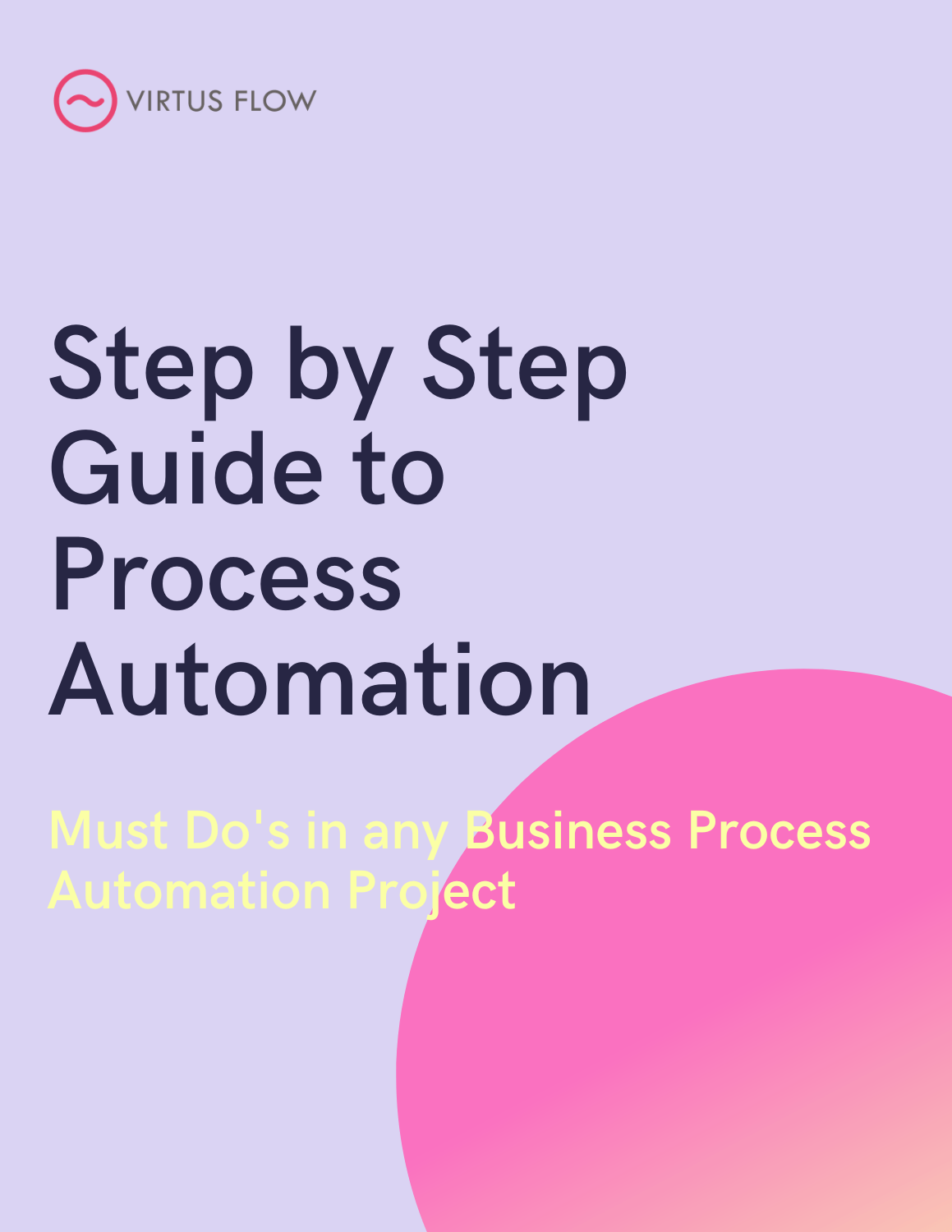“Key findings to understand process improvements through automation.”
Automating tasks to improve efficiency in day to day operations has become a main priority for companies in recent years.
In fact, it is estimated that as many as 46% of companies follow the approach to simplify work processes and reduce cost.
However this is not all, as more digital customers are requesting fully digital experiences.
As a way to automate time consuming and manual repetitive tasks within business processes Digital Process Automation, or DPA, has been developed in recent years.
In this article we will discuss what DPA is and how implementing digital process automation technology can help your company to achieve improved efficiencies.

What is Digital Process Automation (DPA)?
Accenture defines it as: Next generation Business Process Management (BPM) that extends the reach of process automation and orchestration to a broader array of long-tail business requirements.
It leverages low-code/no-code digital platforms for plug & play (API-based) development. It integrates Intelligent Automation and Robotic Process Automation (RPA) into enterprise workflow.
In other words:
Digital Process Automation is the process of streamlining workflows, manual tasks and information management turning your processes into digital ones. It’s the newest BPM software generation that unifies different technologies to automate business processes end to end.
It’s important to point out that it differs from RPA, or Robotic Process Automation. It is common for people to confuse these two. Yet they are very different technologies and are used to automate different processes.
These are some of the most common questions we get about the difference between these two process automation software.
5 Chocking statistics worth considering
-
-
- 1/3 of the tasks in 2/3 of current jobs could be automated (McKinsey)
- 73% of IT leaders say automation saves time, up to 50% of the time they previously spent doing manual tasks (Salesforce)
- 85% of business leaders believe automation is giving employees more time to focus on the goals that truly matter to the company (WorkMarket)
- 97% of IT decision makers say that process automation is crucial to digital transformation (Camunda)
- 48% of organizations are working on installing business process automation solutions to automate management of manual tasks (Camunda)
-

How is DPA different from Robotic Process Automation (RPA)?
While RPA is centered around eliminating the need for humans to complete repetitive, unskilled or low-skilled tasks, DPA focuses on automating processes where human interaction is still needed.
RPA aims to free up employees to focus on more pressing tasks. Whereas DPA looks to make processes faster, more efficient and streamlined. Even if the process still relies on humans.
The use of DPA and RPA are not restrictive as they serve different purposes.
Which processes can I automate with DPA technologies vs RPA?
With DPA Software:
-
- Onboarding Processes: Customer, Supplier, Employee Onboarding
- Incident Management
- Claims Management
- Due Diligence
- Case Management
- Approval Workflows
- Customer Service requests, etc
With RPA software:
-
- Data entry
- Data extraction
- Account Reconciliation
- Data migration
- Candidate sourcing, etc.
Is DPA the same as Business Process Automation (BPA)?
No, as we previously mentioned DPA is a process automation technology. BPA, on the other hand, is a general concept. It’s the application of technology to streamline business processes.
You will be applying business process automation when using either DPA or RPA to automate your workflows.
When should I use Digital Process Automation vs. RPA?
Robotic Process Automation is the ideal choice to fully replace tasks where human intervention is used but not required.
A great example of this is introducing a bot to handle requests for network access. By doing this, instead of having to involve IT approval, the bot will simply optimize the process and free up the staff thanks to machine learning capabilities. It will greatly contribute to improve the user experience.
→ If your process or task is:
-
- Repetitive
- High-volume
- Ruled-based
- Prone to human error
It may be suitable to use a RPA tool.
» On the other hand, because Digital Process Automation aims to automate repetitive tasks to empower employees and customers, this automation technology is ideal to help transform end-to-end processes.
For example, if you’re working towards improving customer experience to support your customer journeys and employees, you should probably use DPA.
→ To understand whether DPA is the right solution for your automation project, ask questions such as:
-
- Do I need to automate the process partially or end to end?
- Is human intervention required?
- Am I looking to standardize the process?
- Is it a critical process and human errors are frequent?
If your answer is positive, DPA should be the right way to go.
What to look for when choosing a Digital Process Automation Software
As beneficial as DPA tools can be, it’s equally important to find the right one that fits your organizational needs.
A few things to look for when shopping for a platform to help you support intelligent automation are:
-
- No-code workflow automation. (Do not require advanced users as no further application development is needed, helps to a speedier adoption)
- Customizable workflows. ( If working with standard processes and working with workflow libraries)
- High flexibility. (Allows you to add any kind of rule and condition to automate processes applying logic that suit your business)
- Real time tracking.
- Possibility of easy integration with apps you already work with.
- Automatic generation of audit trails. (Facilitates problem resolution and compliance)
- Adequate customer service. (If things go wrong, that can always happen, make sure you have the right support)
Automate your processes in hours with a No-Code Digital Process Automation Tool






